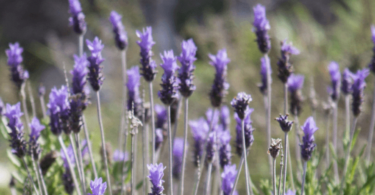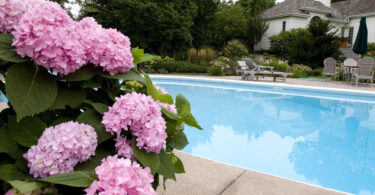Show off your gardening skills with brilliant spring-flowering bulbs. They might not look like much now, but you can certainly bank on their beauty come September. Life is a Garden shares why now is the perfect time to plant bulbs, as the cooler months allow roots to settle in and new growth to develop.
Top tip: Garden centres supply packaged bulbs with instructions for time of planting, depth, height of growth and light requirements. Be sure to choose the right bulb for your space.

Get the best from your bulbs
- Location: Choose a place where you can enjoy their glorious display to the fullest. Plant shorter blooms in the front of a border and medium to tall ones behind them. Also try large groups, drifts, and interspersing bulbs with spring annuals such as pansies and primulas.
- Containers: Enjoy your bulbs on the patio in pots. A depth of 10-15cm will suit most bulbs, but ranunculi, ixias, daffodils and tulips need a deeper container. Ensure your pots have adequate drainage but never allow the bulb roots to dry out. Remember to water daily.
- Soil preparation: Prepare beds or containers at least a week before planting to allow fertilisers time to dissolve, otherwise they may burn bulbs. Before planting, dig in a generous amount of compost followed by a handful of planting fertiliser or bonemeal and water well. For pots, add water-retaining granules to help the soil retain moisture during the dry months. Feed throughout the growing season and after flowering with 3:1:5 Vita Flower or 2:1:1 Bulb Food.
- Depth success: Always read planting instructions carefully. Usually, bulbs should be planted at a depth of three times the actual height of the bulb. Space large bulbs 10-15cm apart and small bulbs 3-5cm apart. Never press the base of the bulb hard into the soil as it will compact. Place a tablespoon of river sand under the bulb to ensure a secure but not too tight base.
- Watering: Start watering as soon as your bulbs are planted otherwise, they may fail to flower. Even though no foliage is showing, activity is taking place. The bulb establishes itself by putting out its root system and for this it needs moisture. Add a layer of mulch to the soil to help retain moisture.
Remember that spring-flowering bulbs don’t like areas with excessive heat radiation as they prefer cool soil. Avoid areas along driveways, paths or sunny walls unless some form of protection is provided. Also avoid using fresh manure as this may burn bulbs.

Bulbs to befriend
Plant these at the end of April: anemone, babiana, fressias, hyacinths, ipheion, ixias, muscari, Ornithogalum, ranunculus, sparaxis, tritonias, waterblommetjies, andDutch iris.
Grow for success: Anemones, ranunculus and indigenous bulbs (except freesias) like full sun, while daffodils prefer morning or partial sun, and freesias, hyacinths and grape hyacinths enjoy semi-shade.

In the garden
To plant:
A carpet of flowers: Alyssum/Lobularia maritima is a herbaceous, low-growing trailing plant that’s ideal as living mulch in all full to semi-sun spots.
Besties for beds: Antirrhinum/snapdragon will bring all beds to life with a pop of colour and variety. They do best in rich, well-draining soil in a sunny spot.

Hedge up!
April is the perfect time to plant a new hedge as cooler soil gives young plants a chance to settle in well. Plant these gorgeous, practical hedges for privacy and décor:
- Plumbago (Plumbago auriculata) is a bushy shrub that flowers profusely from summer to autumn with sky-blue phlox-like flowers. They are ideal for areas with different sun patterns during the day. A bonus is that they are a butterfly favourite!
- Escallonia ‘Iveyi’ is a very versatile evergreen, glossy shrub that grows up to 2,5m in height. They are hardy, fast-growing, and produce white flowers from summer to autumn.
- Amatungulu or big num-num (Carissa macrocarpa) is an indigenous delight that performs well in both coastal and subtropical gardens. Its foliage, starry white flowers, and edible fruit are all very attractive and work well as a thorny boundary for security.
- For a tall and dense evergreen hedge, plant the cold and frost-hardy Sweet Viburnum (Viburnum odoratissimum) or Pittosporum. They do well in full sun and light shade.

Taking care of trees
Feeding young trees is not crucial during the first year or two, but older trees are gross feeders. To ensure a great harvest of fruit, feed trees with a balanced granular fertiliser at least four times per year – in July, September, January and April. Citrus trees growing in pots need additional and regular feeding with a liquid fertiliser.
Watch out for the leaf miner that causes twisting and curling on new leaves. Control with regular applications of Eco Insect Control SC.

Pest alert
- Aphids: Give your flowers a close inspection and if there are still a few around, control with Plant Protector.
- Scale: Inspect stems and branches for these sap-suckers and control by spraying with Malasol or Oleum during cooler months.










Leave a Comment